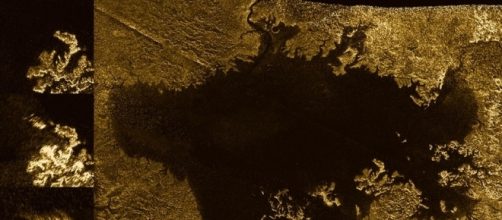The Cassini-Huygens probe has studied Saturn and its moon since 2004, becoming only the fourth space probe to visit the planet and the first to enter Saturn's orbit. Despite the craft's mission ending coming to an end this September, when it will be destroyed by entering Saturn's atmosphere, the probe is still spotting and taking amazing images for scientists to analyze. The latest of these involved the moon Titan and its hydrocarbon seas.
Titan's magic islands
These so-called "magic islands" were first spotted by the Cassini-Huygens probe back in July 2013 and have puzzled scientists until now.
The islands have been known to shift, since they have been infrequently spotted, but they have been seen in some of Titan's hydrocarbon seas. The intrigue and importance of solving this space mystery was even greater for scientists since Titan is the only other known place in the solar system that is able to support stable bodies of liquid on its surface.
Mystery solved via experiment
The mystery of the islands on Titan may have been solved by an experiment that was done by NASA's Pasadena, California-based Jet Propulsion Laboratory (JPL). The researchers at JPL first simulated the surface conditions that would take place on Titan. Titan is a very cold moon, with a dense atmosphere that is almost 100% nitrogen.
It also has a very unique hydrocarbon-based weather system and has liquid nitrogen. Once the moon's atmosphere got simulated JPL researchers concluded that it is likely that a lot of nitrogen can dissolve in the liquid bodies of Titan.
The researchers also came to the conclusion that any small shift in pressure, temperature or other factors would lead to the nitrogen gas fizzing out from these seas and lakes.
This lead the researchers at JPL to conclude that the "magic islands" on Titan were just rafts of fizzing nitrogen bubbles that would come up to the surface to fizz out and then disappear. They also added that this two-way movement of nitrogen gas, was probably a common happening and that it was like the lakes and seas were breathing.

